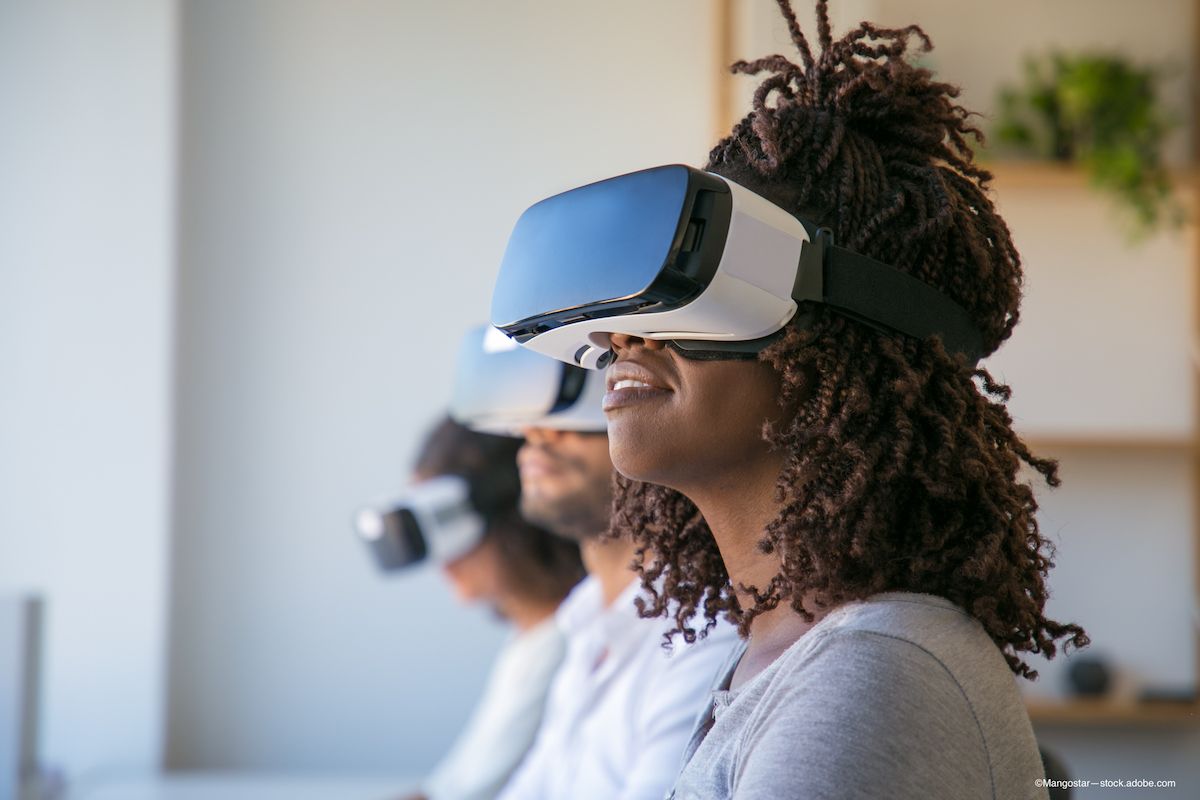New virtual reality visual field analyzer and vision screener now available in US ophthalmic market
OCULUS’ new perimetry device allows for more patient autonomy and easy data compilation for eye care providers by providing visual field tests via a virtual reality headset.
Image credit: Adobe Stock / Mangostar

Virtual reality is paving a new route for eye care providers to conduct visual screen testing for their patients with the launch of OCULUS’ new visual field analyzer and vision screener headset.
The American subsidiary of the German ophthalmic diagnostic device designer announced in a news release that its OCULUS Easyfield VR™ is now available in the US ophthalmic market and “conducts visual field screenings, visual field threshold exams as well as color vision, contrast sensitivity, and stereo vision screenings.”1 Visual field screening takes less than a minute per eye, thanks to the headset’s SMARTTracker™2 Fixation Tracking technology. This feature maintains accurate and continuous eye tracking, making the conduction of a wide range of tests possible.
Additional medical testing available through Easyfield VR™ include threshold visual fields, with 30-2, 24-2, and 10-2 tests taking less than four minutes per eye, progression analysis, eye tracking, and ptosis and Esterman visual tests.2
“This device embodies our goals at OCULUS, Inc. – our focus on progress and innovation, and our dedication to helping ECPs preserve vision and improve workflows, delivering only the best to our customers for their practice and their patients,” said CEO of OCULUS Michael Wolber in the news release. “We look forward to helping clinics streamline their practice flow with the introduction of this latest solution.”
Easyfield VR™ also allows for faster examination times, as all tests are audio guided in either English or Spanish, and patients can complete their visual tests without major involvement from eye care providers. Handheld controllers are also used to allow patients to make selections or provide feedback during the exam. The perimetry device is lightweight, adjustable, padded, and easy to sanitize to ensure patient comfort. Additionally, a shorter testing period independent of room illumination reduces patient fatigue.2
All that is needed from practitioners is to start and monitor the exam process, which can be done from Microsoft’s Surface Pro tablet, even without internet access. Easyfield VR™ also shares the same database as other OCULUS devices, making it easy for eye care providers to upload test data and results into the OCULUS Patient Data Management software. Practitioners can also benefit from the company’s service team for troubleshooting and technical support.1
Visual field testing is essential to determining scotomas, their size and shape, and where they are in a patient’s eye, as well as how eyelid problems may be impacting field of vision. Common visual field tests include confrontation visual field, automated static perimetry, kinetic visual field, frequency doubling perimetry, electroretinography, and the Amsler grid. Those with glaucoma, multiple sclerosis, Graves’ disease, pituitary gland disorders, central nervous system issues, stroke survivors, and long-term use of certain medications should be provided regular visual field testing and eye exams, as determined by their eye care provider. People with diabetes and high blood pressure are also at a greater risk for developing optic nerve and retina damage and may need visual field testing to monitor changes in eye health and vision.3
References
1. OCULUS, Inc. unveils virtual reality visual field analyzer and vision screener for the American ophthalmic market. Press Release. Published January 24, 2024. Accessed January 25, 2024.
2. Easyfield VR mobile visual field analyzer and vision tester. OCULUS. Updated 2024. Accessed January 25, 2024. https://www.oculus.de/us/products/easyfield-vr/#eyetracker
3. Visual Field Test. American Academy of Ophthalmology. Published March 10, 2022. Accessed January 25, 2024. https://www.aao.org/eye-health/tips-prevention/visual-field-testing
Newsletter
Want more insights like this? Subscribe to Optometry Times and get clinical pearls and practice tips delivered straight to your inbox.